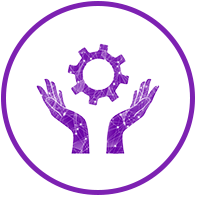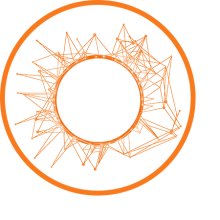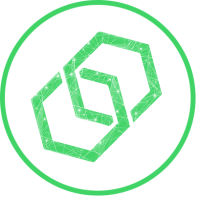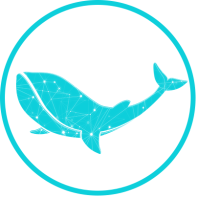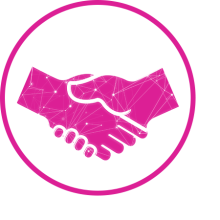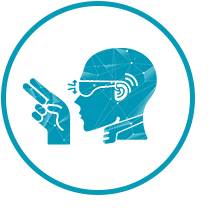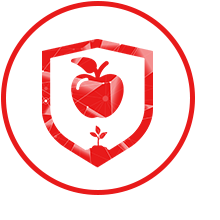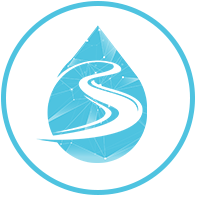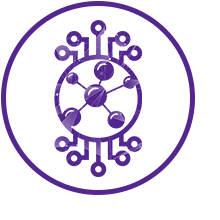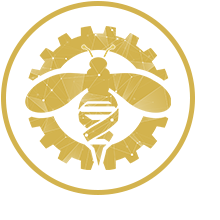The Convergence Accelerator program is composed of five cohorts. Each cohort focuses on convergence research track topics. The 2019, 2020, 2021, and 2022 Cohorts are currently in Phase 2. The 2023 Cohort is currently in Phase 1.
The Convergence Accelerator program model includes the Convergence Research Phases 1 and 2. All teams within a cohort begin in Convergence Research Phase 1 – a proof-of-concept planning phase. At the end of Phase 1, teams participate in a formal NSF pitch and proposal evaluation. Selected teams advance to Phase 2.
Phase 2 teams continue to apply program fundamentals to develop solution prototypes and to build a sustainability model. By the end of Phase 2, teams are expected to provide deliverables that impact societal needs at scale and are sustainable beyond NSF support.
2019 Cohort
Launched in September 2019, 43 Phase 1 teams were awarded a total of $39 million to support projects focused on two research track topics: Open Knowledge Networks, Track A, and AI and the Future of Work, Track B.
In September 2020, the Convergence Accelerator awarded nine teams Phase 2 awards, investing more than $28 million to address national-scale societal challenges and to generate knowledge to transition ideas from research into practice.
Vast amounts of data are produced every day, yet many organizations lack the accessibility to use these data to draw insights and make decisions. Knowledge networks, or repositories, that host the world's knowledge will help power the next wave of artificial intelligence exploration, driving innovations from scientific research to the commercial sector.
Knowledge networks and graphs provide a powerful approach for data discovery, integration and reuse. But they also require an investment in their creation and maintenance. Today, only the biggest technology companies have the resources to develop and exploit significant knowledge graphs and networks.
To enable data to be freely accessible, especially to government, academia, small business and nonprofit organizations, the Convergence Accelerator is funding the creation of nonproprietary infrastructure to build open knowledge networks, OKNs.
Using artificial intelligence and machine learning, Convergence Accelerator teams build infrastructure, tools and applications to identify and link data points, describe relationships and gather information at speed and scale — enabling data-driven insights.
Open knowledge networks connect people, events, places, environments, health and more, removing boundaries between these domains. They link data, its attributes, and relationships to other data — making that information accessible to decision-makers, analysts, researchers, and the public so they can answer questions they care about.
The Convergence Accelerator teams currently focus on urban flooding, judicial court records, biomedical health, geospatial information, and technology infrastructure for knowledge network creation and use.
The Open Knowledge Networks Phase 2 projects include:
AI and machine learning infrastructure tools and applications
- OKN Infrastructure — Led by the University of Michigan, the team is building infrastructure for constructing novel OKNs and OKN-powered applications. This solution provides tools to make the creation and maintenance of high-quality datasets and apps more cost-effective and more widely accessible.
- KnowWhereGraph — Led by the University of California, Santa Barbara, KnowWhereGraph provides knowledge graph and geo-enrichment services for environmental intelligence applications. The solution enriches data with pre-integrated, custom-tailored knowledge about any locale of interest, reducing the time to find, combine and reuse data. The initial application areas focus on decision support related to food systems, supply chains and humanitarian aid but can easily be expanded to other application areas.
Domain-based open knowledge networks
- Biomedical Open Knowledge Network — Led by the University of California, San Francisco, the network connects millions of pieces of biomedical information, including molecules, pharmacological compounds, organs and diseases, food nutrients and more. Centered around knowledge representation and reasoning, the team develops applications using graph theory, advanced visualizations and real-world clinical evidence to advance drug development and precision medicine.
- SCALES — Led by Northwestern University, the SCALES open knowledge network is designed to be a public resource to help provide insights based on judicial court records. SCALES is creating tools to decode court records and transform the data into actionable information that aids various users, including legal scholars, journalists, policymakers, judiciary and citizens.
- Urban Flooding Open Knowledge Network — Led by the University of Cincinnati, the network addresses urban flooding impacts to assist decision-makers and urban planners in real-time response and long-term planning.
Integrating the knowledge networks
- Data2Knowledge Consortium — Knowledge graphs are rapidly emerging as key infrastructure to integrate the diverse information needed to solve complex societal challenges, from climate change and human health to capturing business value from the AI revolution. The Open Knowledge Network phase 2 teams are collaborating on track integration to create the Data2Knowledge Consortium and ensure that the outcome from the Convergence Accelerator Track is "greater than the sum of its parts." Composed initially of the current Open Knowledge Network phase 2 teams, the objective of the Data2Knowledge Consortium is to facilitate a thriving ecosystem for open knowledge graph development and use.
The Open Knowledge Networks Phase 1 projects include:
- A multi-scale open knowledge network for precision medicine, led by University of California, San Francisco.
- Building the Federalism Data and Advanced Statistics Hub (FDASH), led by University of North Carolina, Charlotte.
- Civil Infrastructure Systems Open Knowledge Network (CIS-OKN), led by University of Illinois Urbana-Champaign.
- Convergence Hub for the Exploration of Space Science (CHESS), led by the Atmospheric and Space Technology Research Associates.
- Convergence Research to meet Ocean Decision Challenges, led by Gulf of Maine Research.
- Credible Open Knowledge Network, led by University of Texas at Arlington.
- Exploiting Financial and Economic Data - Business OKN, led by University of Southern California.
- Knowledge of Internet Structure: Measurement, Epistemology, and Technology (KISMET), led by University of California, San Diego.
- Knowledge Open Network Queries for Research (KONQUER), led by University of California, San Diego.
- Linking the Open Knowledge Network to the Web with End-User Programming, led by University of Washington.
- MPrint-OKN, led by Virginia Commonwealth University.
- Network for Equity in the Era of Driverless Vehicles, led by Regents of the University of Michigan.
- Network Science of Census Data, led by Tufts University.
- Northwestern Open Access to Court Records Initiative, led by Northwestern University.
- Open Knowledge Network for Spatial Decision Support, led by Portland State University.
- Open Knowledge Network for the Global Energy Data Commons, led by Duke University.
- Product Design and Manufacturing Graph-as-a-Service, led by North Carolina State University.
- Scalable Knowledge Network to Enable Intelligent Textbooks, led by Rice University.
- Simultaneous Knowledge Network Programming and Extraction, led by Regents of Michigan University.
- Spatially-Explicit Models, Methods, and Services for Open Knowledge Networks, led by University of California, Santa Barbara.
- The Urban Flooding Open Knowledge Network, led by University of Cincinnati.
Open Knowledge Networks Track Manager: Jemin George, program director
The world’s technological advancements in AI, machine learning, and robotics are shifting the future of work in unanticipated ways. The NSF Convergence Accelerator is focusing on solutions to train, reskill, upskill, and prepare the current and future workforce with industry needs and jobs of the future, as well as build a national talent ecosystem to stimulate the U.S. workforce and ensure continuing global competitiveness.
Teams composed of academia, industry, nonprofits, and end-user partners are converging together to develop disruptive future of work solutions that envision a positive national-sale societal impact. With these solutions, technology is utilized to create a STEM talent pipeline relevant to industry needs, keep workers safe and help them perform their jobs better, create new jobs, and facilitate accessibility and inclusivity. Solutions include developing the U.S. talent pipeline through competency-based training intelligent tools to connect academic institutions with industry needs to prepare students for the workforce, improving workforce training and safety for emergency responders through human augmentation, and creating virtual reality and augmented reality (VR/AR) tools to identify unique skills of neurodiverse individuals thus preparing them to thrive in the workforce.
The Future of Work funded Phase 2 projects include:
- LEARNER — Led by Texas A&M, is an agile and adaptive Human Augmentation Technologies (HAT) integrated Emergency Response (ER) training platform that accelerates HAT adoption for safer and more efficient ER work, supports adaptive learning sensitive to ER workers’ socio-technical opportunities and budgetary constraints, builds and retains skilled ER personnel, and accelerates next-gen workforce development.
- SkillSync — Industry 4.0 is changing the skills that workers need and companies require, leaving businesses vulnerable and colleges behind. SkillSync, led by Eduworks Corporation, uses AI and national skills data to help companies identify required skills, connect them with college continuing education departments, and enable colleges to respond with efficient, effective, and equitable reskilling programs.
Integrating the Future of Work Ecosystem
- STEP UP! — To guarantee the convergence research Future of Work track focus is greater than the “sum of its parts", Phase 2 team solutions converge toward track integration, creating STEP UP the Skills-Based Talent Ecosystem Platform for Upskilling. Composed of the Future Work teams, STEP UP connects the skills and talents of individual workers to the opportunities that most need them. By inclusively engaging America’s human skill and talent, and the technologies that support, augment, and develop that talent, the group is ensuring every American may partake in the benefits of a thriving economy and the dignity of meaningful work.
The AI and the Future of Work Phase 1 projects include:
- A Framework for Diagnosis, Recommendation, and Training in Continuous Workforce Development, led by University of Massachusetts Amherst.
- A Universal Framework of Micro-credentials for Nation-wide Employment, led by the State University of New York, Buffalo.
- AI-Based Decision Support for Linking Workers with Future Jobs and for Planning Work Transition and Career Pathway, led by Michigan State University.
- AI-Enabled Personalized Training for Displaced Workers in Materials Supply Chain, led by Colorado School of Mines.
- Analytics-Driven Accessible Pathways To Impacts-Validated Education (ADAPTIVE), led by Indiana University.
- Competency Catalyst, led by Georgia Tech Research Corp.
- Connecting Indiana's Learn-And-Work Ecosystem, led by Credential Engine.
- Developing Intelligent Technologies for Workforce Empowerment: Credential Gap Diagnostics and Personalized Recommenders for Jobs and Retraining, led by North Carolina State University.
- Empowering a digital technology workforce through alignment and coordination of upskilling and reskilling opportunities, led by Business-Higher Education Forum.
- Empowering Neurodiverse Populations for Employment through Inclusion AI and Innovation Science, led by Vanderbilt University.
- Fostering a Diverse AI Workforce, led by Columbia University.
- Learning Environments with Advanced Robotics for Next-generation Emergency Responders (LEARNER), led by Virginia Tech.
- Prepare the US labor force for future jobs in the hotel and restaurant industry: A hybrid framework and multi-stakeholder approach, led by University of Central Florida.
- Preparing the Future Workforce of Architecture, Engineering, and Construction for Robotic Automation Processes, led by Florida International University.
- Rapid Dissemination of AI Microcredentials through Hands-on Industrial Robotics Education (RD-AIM-HIRE), led by Carnegie Mellon University.
- Safe Skill-Aligned On-The-Job Training with Autonomous Systems, led by Arizona State University.
- Skill-LeARn: Affordable Augmented Reality Platform for Scaling Up Manufacturing Workforce, Skilling, and Education, led by Purdue University.
- Smart Platform of Personalized Learning, Assessment and Prediction for Future Career Training of Skilled Workers, led by University of North Carolina, Charlotte.
- Toward Fair, Ethical, Efficient, and Trustworthy Crowdsourcing Platforms to Support Crowdworkers in Jobs of the Future, led by Colorado School of Mines.
- Unlocking the Power of Data and Science to Empower American Workers, led by National Bureau of Economic Research.
- Unpacking the Technology Career Path, led by University of Virginia.
- Upskilling for Future Jobs through NLx Talent Demand Data, led by THE CENTER FOR EMPLOYMENT SECURITY EDUCATION & RESEARCH INC.
AI & the Future of Work Track Manager: Linda K. Molnar, program director
NSF Convergence Accelerator awards bring together scientist, businesses, nonprofits to benefit workers, Sept. 10, 2019
Accelerating research to impact society at scale, Sept. 3, 2020
Track A: Open Knowledge Networks Phase 2 videos
Biomedical Open Knowledge Network
KnowWhereGraph
OKN Infrastructure
SCALES
Urban Flooding Open Knowledge Network
Data2Knowledge Consortium
Track B: The Future of Work Phase 2 videos
LEARNER
SkillSync
Skills-Based Talent Ecosystem Platform for Upskilling, STEP UP
2020 Cohort
In September 2020, the Convergence Accelerator launched the 2020 Cohort, awarding 29 teams Phase 1 awards totaling $27 million. The 2020 Cohort addresses two transformative research areas of national importance: Quantum Technology, Track C, and AI-Driven Innovation via Data Sharing and Model Sharing, Track D.
In September 2021, the Convergence Accelerator awarded 10 teams Phase 2 awards totaling $50 million.
Improving the U.S. industrial base, maintaining an edge in emerging technology areas, creating jobs, and making significant progress to address economic and societal needs are all vital challenges to the nation. Teams within the NSF Convergence Accelerator's Quantum Technology track are developing quantum technologies — sensors, devices, hardware, interconnects, networks and simulations — to deploy in applications such as autonomous vehicles and health care. They are also creating innovative curricula by leveraging strong industry-university partnerships that are diverse and inclusive.
The Quantum Technology Phase 2 projects include:
Quantum sensors
- Quantum Sensors — Led by the University of Arizona, the team is developing an entanglement-enhanced sensing architecture to benefit many domains, including secure inertial navigation, space and planetary terrestrial control, and health care monitoring.
- PEAQUE — Led by the University of Washington, the team is addressing quantum computing scalability by innovating a chip-scale, multi-beam optical control system that empowers cold-atom quantum computing with thousands of qubits.
Quantum networks and simulations
- QuaNeCQT — Led by the University of Maryland, the team is developing hardware to transform the internet into a quantum internet, which will be essential for connecting the anticipated rapid expansion of quantum computers.
Workforce and education
- QuSTEAM — Led by the Ohio State University, QuSTEAM is a transformational undergraduate curriculum aimed at addressing critical workforce needs in quantum information science and engineering.
The Quantum Technology Phase 1 projects include:
- A toolkit for solving practical materials science problems on near-term, led by University of Texas at Austin.
- Chip-scale Integrated Multibeam Steering System for Cold-Atom Quantum Computing, led by University of Washington.
- Chiral-based Quantum Interconnect Technologies (CirquiTs), led by University of California, Los Angeles.
- Cloud-Accessible Integrated Quantum Simulator Based on Programmable Atom Arrays, led by Columbia University.
- High-throughput Proteomics Technology Based on Quantum Sensing, led by University of Chicago.
- Interconnecting Quantum Computers for the Next-generation Internet, led by University of Maryland, College Park.
- National Quantum Literacy Workforce Curriculum and Training Network, led by Morgan State University.
- Quantum-interconnected optomechanical transducers for entanglement-enhanced force and inertial sensing, led by University of Arizona.
- QuSTEAM: Convergent undergraduate education in Quantum Science, Technology, Engineering, Arts, and Mathematics, led by Ohio State University.
- SQAI: Scalable Quantum Artificial Intelligence for Discovery, led by The Pennsylvania State University.
- Synergistic thrusts towards practical topological quantum computing, led by Massachusetts Institute of Technology.
Quantum Technology Track Manager: Pradeep Fulay, program director
AI research and development require access to high-quality datasets and environments and resources for testing and training. NSF’s Convergence Accelerator is funding the development of tools and platforms to address data and model-sharing challenges, including privacy protection and easy and efficient data matching and sharing.
The AI-Driven Innovation via Data and Model Sharing Phase 2 projects include:
Civil/build infrastructure
- AI-Grid — Led by Stony Brook University, AI-Grid is an AI-enabled solution for resilient networked microgrids.
Environment
- BurnPro3D — Led by the University of California, San Diego, BurnPro3D is a platform for public sector collaboration to reduce the risk of devastating megafires. Leveraging the WIFIRE Commons data sharing and AI framework, BurnPro3D uses next-generation fire science to prescribe burns for vegetation management at an unprecedented scale.
- Computing the Biome — Led by Vanderbilt University, the team is creating a data and AI platform for monitoring and predicting biothreats in a major U.S. city, and to drive economic sustainability by empowering businesses and advanced research organizations to deliver valuable consumer apps and breakthroughs.
- CRIPT — Led by the Massachusetts Institute of Technology, CRIPT is an AI-enabled cloud application and database that enables polymer scientists to easily find and interact with complex data.
- HydroGEN — Led by the University of Arizona, HydroGEN is a web-based machine learning platform that generates custom hydrologic scenarios on demand.
- Precision Epidemiology — Led by the University of California, Davis, the team is developing an online platform that converges data, AI models, and expertise across the livestock production and health space for the management of animal health.
AI-Driven Innovation via Data and Model Sharing Phase 1 projects include:
- A Community Resource for Innovation in Polymer Materials, led by Massachusetts Institute of Technology.
- A Standardized Model Description Format for Accelerating Convergence in Neuroscience, Cognitive Science, Machine Learning and Beyond, led by Princeton University.
- A Trusted Integrative Model and Data Sharing Platform for Accelerating AI-Driven Health Innovation, led by Duke University.
- AI-Enabled Provably Resilient Networked Microgrids, led by State University of New York, Stony Brook.
- AI-Enabled, Privacy-Preserving Information Sharing for Securing Network Infrastructure, led by Carnegie Mellon University.
- America's Water Risk: Water System Data Pooling for climate vulnerability assessment and warning system, led by Columbia University.
- Application of sequential inductive transfer learning for experimental metadata normalization to enable rapid integrative analysis, led by Research Triangle Institute.
- Artificial Intelligence and Community Driven Wildland Fire Innovation via a WIFIRE Commons Infrastructure for Data and Model Sharing, led by University of California, San Diego.
- Data & AI Methods for Modeling Facial Expressions in Language with Applications to Privacy for the Deaf, ASL Education & Linguistic Research, led by Rutgers University, New Brunswick.
- Data-driven disease control and prevention in veterinary health, led by University of California, Davis.
- Deep Monitoring of the Biome Will Converge Life Sciences, Policy, and Engineering, led by Vanderbilt University.
- Hidden water and hydrologic extremes: a groundwater data platform for machine learning and water management, led by University of Arizona.
- ImagiQ: Asynchronous and Decentralized Federated Learning for Medical Imaging, led by University of Iowa.
- Intelligent surveillance platform for damage detection and localization of civil infrastructure, led by Howard University.
- Rapid Development of Intelligent, Built Environment Geo-Databases Using AI and Data-Driven Models, led by Oregon State University.
- Scalable, TRaceable Ai for Imaging Translation: Innovation to Implementation for accelerated Impact (STRAIT I3), led by Vanderbilt University.
- The Data Hypervisor: Orchestrating Data and Models, led by University of Chicago.
- Towards Intelligent Sharing and Search for AI Models and Datasets, led by University of California, San Diego.
AI-Driven Innovation via Data and Model Sharing Track Manager: Michael Pozmantier, program director
Track C: Quantum Technology, Phase 2 project videos
PEAQUE
QuaNeCQT
Quantum Sensors
QuSTEAM
Track D: AI-Driven Innovation via Data and Model Sharing project videos
AI-Grid
BurnPro3D
Computing the Biome
CRIPT
HydroGEN
Precision Epidemiology
2021 Cohort
In September 2021, the Convergence Accelerator launched the 2021 Cohort, awarding 28 teams Phase 1 awards totaling $21 million. The program’s third cohort is advancing solutions in two critical areas: the Networked Blue Economy, Track E, and Trust & Authenticity in Communication Systems, Track F.
In August 2022, the Convergence Accelerator awarded 12 teams Phase 2 awards totaling $60 million.
Ocean-related industries and resources, known as the blue economy, play a central role in addressing challenges related to climate, sustainability, food, energy, pollution and the economy. This track focuses on interconnecting the blue economy and accelerating convergence across ocean sectors — creating a smart, integrated, connected and open ecosystem for ocean innovation, exploration and sustainable use. Collectively, funded research teams will produce tools, methods and educational resources that improve human engagement with the world's oceans as both an environment and a resource.
The Networked Blue Economy Phase 2 projects include:
- Backyard Buoys— Led by the University of Washington, Backyard Buoys empowers Indigenous and other coastal communities to collect and use ocean data to support maritime activities, food security and coastal hazard protection.
- BlueGAP— Led by the University of South Florida, the BlueGAP project connects community organizations across watersheds to address economic and health challenges caused by nitrogen pollution. BlueGAP empowers people to reach well-informed decisions for better living through storytelling, reliable water quality information and tailored decision trees that link to next steps for action.
- Digital Reefs— Led by the Woods Hole Oceanographic Institute, Digital Reefs delivers interactive 4D visualizations of reef environments into the hands of local communities, helping to ensure a sustainable future for all coral reefs.
- Nereid Biomaterials— Led by the University of California, Santa Barbara, Nereid Biomaterials is enabling a healthier ocean through safe and rapid ocean degradation of plastic components of equipment. By merging marine microbiology, synthetic biology, materials science and robotics, the team is developing "ocean degradable" polymers with embedded additives to accelerate and control degradation.
- Ocean Vision AI — Led by the Monterey Bay Aquarium Research Institute, Ocean Vision AI accelerates the processing of underwater visual data with a globally integrated network of services, tools and diverse community of users. Ocean Vision AI streamlines access and analysis of ocean visual data to enable effective marine stewardship.
- ReCoast—Led by Tulane University, ReCoast is ensuring ecological safety and mitigation of land loss through coastal community recycling programs to keep glass out of landfills by creating glass sand products that support coastal restoration and preservation projects.
The Networked Blue Economy Phase 1 projects include:
- A Globally Coordinated, Universally Accessible Digital Twin Network for the Coral Reef Blue Economy, led by Woods Hole Oceanographic Institution.
- Advancing Innovative Convergence Between Fisheries and Offshore Energy to Drive Adaptive Stewardship of Fisheries Habitat in a Dynamic Blue Economy, led by Blue Latitudes, LLC.
- Combining High-resolution Climate Simulations with Ocean Biogeochemistry, Fisheries and Decision-making Models to Improve Sustainable Fisheries, led by Texas A&M University.
- Convergence Towards Nationwide Smart Precision Aquaculture Networks for Sustainable Shellfish Farming, led by the University of Maryland, College Park.
- Data Governance to Support an Equitable and Sustainable Blue Economy, led by Multiplier.
- Data Interfacing of Human Use, Culture, Economics, and Environment within the Blue Economy for Underserved Populations, led by West Virginia University.
- Developing Blue Economy from Micro to Macro-scale in Kelp Aquaculture, led by San Diego State University.
- Empowering Stakeholders from Ship to Store, Solving Fishery Management Challenges with Use-Inspired Genomic and Artificial Intelligence Tools, led by Michigan State University.
- Equipping Underserved Communities with Ocean Intelligence Platforms, led by the University of Washington.
- Innovative Seafood Traceability Network for Sustainable Use, Improved Market Access, and Enhanced Blue Economy, led by Loyola Marymount University.
- Linking the Green Economy to the Blue Economy at the Coast, led by the University of South Florida.
- Next Generation Biomaterials with Engineered Biodegradability to Enable Networked Swarm Sensing in the Ocean, led by the University of California, Santa Barbara.
- Ocean Vision Artificial Intelligence: Scaling Up Visual Observations of Life in the Ocean Using Artificial Intelligence, led by Monterey Bay Aquarium Research Institute.
- Reconfiguring Urban Shorelines for Resilience: Convergence Research Meshing Ecology, Engineering, and Architecture, led by Stony Brook University.
- Regional Climate Change Projections to Enable Equitable Ocean Planning for the Blue Economy, led by Rutgers University.
- Using Recycled Glass Sand to Promote Resilience and the Blue Economy in Coastal Communities, led by Tulane University.
Networked Blue Economy Track Manager: Aurali Dade, program director
Modern life depends on access to communications systems that offer trustworthy and accurate information. Economic growth and opportunity depend on dynamic networks for innovation and transaction that connect American families, communities, and businesses to a range of goods and services. Yet, these systems face a common threat. Communication systems can be manipulated or can have unanticipated negative effects. The overarching goal of this track is to address the urgent need for tools and techniques that help our nation effectively prevent, mitigate and adapt to critical threats to communication systems.
The Trust & Authenticity in Communication Systems Phase 2 projects include:
- ARTT— Led by Hacks/Hackers, this team assists online communities with building trust around controversial topics such as vaccine efficacy. Users receive helpful approaches to engage, navigate, and analyze information. The toolkit’s primary resource, ARTT Guide, provides expert-informed suggestions- for analyzing information and communicating with others to build trust.
- Chime— Led by the University of Wisconsin-Madison, this team creates a dynamic misinformation identification dashboard, empowers journalists to identify misinformation networks, correct misinformation within the affected networks, and test the effectiveness of corrections. Designed by mass communication, computer scientists, engineers, and social media experts, Chime (formerly known as Course Correct) rebuilds trust in civic institutions while helping journalists tame the misinformation tide.
- Co-Designing for Trust — Led by the University of Washington, this team builds community-oriented infrastructure that supports underserved communities to design, collaborate on, customize, and share digital literacy approaches. Developed by academic researchers, community organizations, libraries, journalists, and teachers, Co-Designing for Trust re-imagines literacy to provide the cognitive, social, and emotional skills necessary to respond to problematic information.
- Co-Insights—Led by Meedan, this team enables community, fact-checking, and academic organizations to collaborate and respond effectively to emerging misinformation narratives that stoke social conflict and distrust. Our easy-to-use, mobile-friendly tools allow community members to report problematic content and discover resources while cutting-edge machine learning analyzes content across the web to create valuable insights for community leaders and fact-checkers.
- DART— Led by State University of New York Buffalo, this team helps older adults recognize threats so they can protect themselves. Developed by game designers, social media researchers and security experts, DART is unique in tailoring its curriculum and using gamification to make training accessible and engaging for older adults.
- Expert Voices Together— Led by George Washington University, this team is building a rapid-response system to assist journalists, scientists, and other experts whose work is being undermined by coordinated online harassment campaigns. Modeled on best practices in trauma-informed crisis intervention, the EVT platform provides a secure environment for experts to receive support from their professional communities.
The Trust & Authenticity in Communication Systems Phase 1 projects include:
- A Disinformation Range to Improve User Awareness and Resilience to Online Disinformation, led by the State University of New York, Buffalo.
- Actionable Sensemaking Tools for Curating and Authenticating Information in the Presence of Misinformation during Crises, led by the Ohio State University.
- Adapting and Scaling Existing Educational Programs to Combat Inauthenticity and Instill Trust in Information, led by Massachusetts Institute of Technology.
- America's Fourth Estate at Risk: A System for Mapping the (Local) Journalism Life Cycle to Rebuild the Nation's News Trust, led by Temple University.
- An Algorithmic Observatory to Address Financial Misinformation and Disinformation in Minoritized Communities, led by the University of California, Irvine.
- Analysis and Response for Trust Tool (ARTT): Expert-Informed Resources for Individuals and Online Communities to Address Vaccine Hesitancy and Misinformation, led by Hacks/Hackers.
- Building Trust in Communication Systems by Addressing Misinformation-Driven Online Abuse and Harassment, led by George Washington University.
- Co-designing for Trust: Reimagining Online Information Literacies with Underserved Communities, led by the University of Washington.
- FACT-CHAMP — Fact-checker, Activist, and Academia Collaboration Tools: Combating Hate, Abuse, and Misinformation with Minority-led Partnerships, led by Meedan.
- How Large-Scale Identification and Intervention Can Empower Professional Fact-Checkers to Improve Democracy and Public Health, led by the University of Wisconsin-Madison.
- Misinformation Judgments with Public Legitimacy, led by the University of Michigan.
- Verified Information Exchange, led by the University of Washington.
Trust & Authenticity in Communication Systems Track Manager: Michael Pozmantier, program director
NSF invests $21 million to tackle 2 complex societal challenges: the networked blue economy, and trust and authenticity in communication systems, September 22, 2021
NSF's Convergence Accelerator invests $30 million to tackle challenges related to the blue economy, September 21, 2022
Track E: The Networked Blue Economy Project Videos
Backyard Buoys
BlueGAP
Digital Reefs
Nereid Biomaterials
Ocean Vision AI
ReCoast
Track F: Trust & Authenticity in Communication Systems
ARTT
Co-Designing for Trust
Co-Insights
Course Correct
DART
2022 Cohort
In August 2022, the Convergence Accelerator launched its fourth cohort, the 2022 cohort, awarding 16 teams a total of $12 million to the Track G: Securely Operating Through 5G Infrastructure. Track G is in partnership with the Department of Defense Office of the Under Secretary of Defense for Research and Engineering, or DOD OUSD(R&E).
In December 2022, the program launched three additional convergence research tracks: Enhancing Opportunities for Persons with Disabilities, Track H, Sustainable Materials for Global Challenges, Track I, and Food & Nutrition Security, Track J, with a more than $34 million investment. Each track awarded 16 Phase 1 teams.
At the end of 2023, the program advanced Tracks G, H, and J from Phase 1 to Phase 2, totaling an investment of more than $95 million.
5G wireless networks are crucial components of modern communication systems and have become essential to national security. The goal of this track is to seek enhancements to end devices and/or augmentations to 5G infrastructure to enable military, government, and critical infrastructure operators to have the capability to operate through public 5G networks, while meeting security and resilience requirements.
The Securely Operating Through 5G Infrastructure Phase 2 projects include:
- AVOID — Led by Johns Hopkins University, Automated Verification of Internet Data-paths or AVOID, secures 5G communications by restructuring communication paths to avoid adversary-controlled base stations, networks, and locations, ensuring that critical 5G communications remain invisible to even the most sophisticated adversaries.
- GHOST — Led by the University of Colorado, Boulder, the 5G Hidden Operations through Securing Traffic (GHOST) team proposes a solution to operate securely through untrusted 5G networks by securing user devices, preventing pattern-of-life analysis, impeding traffic analysis, and injecting false information.
- INDIGO — Led by AT&T Corporation, The Intelligent 5G Networks Designed and Integrated for Globalized Operations (INDIGO) project ensures secure, resilient, and quality 5G communications for warfighters and first responders by employing Human-Centered Artificial Intelligence, integrating several Zero Trust capabilities, and leveraging the Open Radio Access Network architecture.
- SE-RAN — Led by SRI International, the Security-Enhanced Radio Access Network (SE-RAN) project is developing a multi-layered sensor and enforcement platform for managing security services for Open Radio Access Network (O-RAN) compliant 5G+ mobile infrastructure.
- ZTX — Led by the University of Kansas, the Zero Trust X (ZTX) team proposes an end-to-end software solution, the Zero Trust Chain, designed to securely share situational awareness through 5G networks for military operations.
The Securely Operating Through 5G Infrastructure Phase 1 projects include:
- 5G Hidden Operations through Securing Traffic, or GHOST, led by University of Colorado Boulder.
- 5G Traffic Sovereignty: Operating Through an Adversarial Internet, led by University of California San Diego.
- Autonomously Tunable Waveform-Agnostic Radio Adapter for Seamless and Secure Operation of DoD Devices Through Non-Cooperative 5G Networks, led by Florida International University.
- Building Resilient and Secure 5G Systems, or BRASS, led by Red Balloon Security.
- Combating Vulnerability and Unawareness in 5G Network Security: Signaling and Full-Stack Approach, led by University of Kansas.
- Feasible Cooperative Zero Trust Framework for 5G, led by Blackberry Corporation.
- Intelligent 5G Networks Designed and Integrated for Globalized Operations, or INDIGO, led by AT&T Corporation.
- Lightweight Scalable Secure 5G and Beyond Networks, led by Novowi.
- Security Services for the 5G Software-Defined Edge, led by SRI International.
- Programmable Zero-Trust Security, or PETS, for Operating Through 5G Infrastructure, led by Texas A&M Engineering Experiment Station.
- Privacy-preserving Intrusion-resilient Secure Multiparty-computation-based Overlay for Secure and Resilient Communication Through 5G, led by SRI International.
- Proactive End-to-End Zero Trust-Based Security Intelligence for Resilient Non-cooperative 5G Networks, led by University of Michigan.
- Secure Censor-resistant Overlay Resilient Networks, or SCORE, led by Peraton Labs.
- Secure Texting over Non-cooperative Networks and Anti-jamming Enhancement in 5G, led by George Mason University.
- Securely Operate through 5G Networks with Informed Control, or SONIC, led by the University of Utah.
- SMART-5G: Secure Multichannel Automated opeRations Through 5G Networks, led by IBM, Consulting Federal.
Securely Operating Through 5G Infrastructure Track Manager: Jemin George, program director
According to the World Health Organization an estimated 1.3 billion or 1 in 6 people globally experience significant disability. Regardless of the type of disability, persons with disabilities or PWDs experience major barriers hindering their ability for achieving better economic opportunities, quality of life, health, and wellness. The goal of this track is to develop new technologies and tools to enhance quality of life and employment access and opportunities for PWDs. By serving as a platform the track will bring together a wide range of disciplines and sectors to develop use-inspired solutions.
The Enhancing Opportunities for Persons with Disabilities Phase 2 projects include:
- HeardAI — Led by Michigan State University, HeardAI's vision is to transform voice-artificial intelligence technology accessibility for 80 million people who stutter, then eventually benefit all users. The solution's extensible sociotechnical framework offers accessibility guidance for compliance checking, a realistic stuttered speech testbed for product evaluation, an application and an application programming interface to make voice-activated products and services accessible.
- Inclusio — Led by Saint Louis University, Inclusio is reimagining accessibility by transforming how people create and consume accessible content in classrooms, workplaces, and homes. The project aims to provide an end-to-end software platform that enables rapid sourcing and generation of accessible content that can be felt, heard, and seen across multiple platforms, with a core mission of serving those with low vision and blindness.
- MABLE — Led by Lehigh University, Mapping for Accessibility in Environments (MABLE) is providing people with disabilities independence to experience large events, conferences and educational programs. Using crowdsensing, AI and robotics, MABLE empowers individuals with a responsive map and turn-by-turn instructions through a digital app to help them navigate indoor environments successfully.
- Project DRIVE — Led by Northwestern University, Project DRIVE imagines a future where power wheelchairs are accessible to everyone that needs one. By connecting current and future technologies, the solution enables safe, independent, power wheelchair operations using intelligent robotic assistance.
- Reachable — Led by Harvard University, Reachable is creating an at-home rehabilitation solution to restore arm function after a stroke. Reachable is a wearable technology that supports an end-user to practice reaching with their affected arm during daily activities while remotely monitoring recovery and providing feedback to encourage behavioral change.
- UNav — Led by the New York University Medical Center, UNav revolutionizes navigation for visually impaired users through precision localization technology that maps and provides wayfinding for both indoor and outdoor environments. As a mobile application or hands-free wearable technology, UNav communicates directions and hazards using multisensory feedback. The solution improves travel equity by cutting travel time, reducing injuries and increasing environmental awareness.
Track H: Enhancing Opportunities for Persons with Disabilities Phase 1 projects include:
- Advancement of Driving Technology for Vocational Enablement, led by Mississippi State University.
- AI-based Tools to Enhance Access and Opportunities for the Deaf, led by Rutgers University.
- Appropriate Rehabilitation Technology via Passive Tactile Stimulation, led by Stanford University.
- Automating Transportation Affordances for People Living with Disabilities Using a Machine Learning Approach, led by Utah State University.
- Bridging the Fragmentation of Information Access — An Integrated, Multimodal System for Inclusive Content Creation, Conversion, and Delivery, led by Saint Louis University.
- Convergent, Human-Centered Design for Making Voice-Activated AI Accessible and Fair to People Who Stutter, led by Michigan State University.
- Determining Community Needs for Accessibility Tools that Facilitate Programming Education and Workforce Readiness for Persons with Disabilities, led by the University of Southern California.
- Developing Experiential Accessible Framework for Partnerships and Opportunities in Data Science for the Deaf Community, led by Purdue University.
- Leveraging Human-Centered AI Microtransit to Ameliorate Spatiotemporal Mismatch Between Housing and Employment for Persons with Disabilities, led by Wayne State University.
- Making Virtual Reality Meetings Accessible to Knowledge Workers with Visual Impairments, led by Cornell University.
- Mobility Independence Through Accelerated Wheelchair Intelligence, led by Northwestern University.
- Next Generation Augmentative and Alternative Communication Technology Powered by Artificial Intelligence, led by the University of Arkansas.
- Rapid Fabrication of Custom-Fit Reshapable Prosthetic Devices with Electronic Skin Sensors, led by Rocky Tech, Ltd.
- Restoring Arm Function After Stroke, led by Harvard University.
- Smart Wearables for Expanding Workplace Access for People with Blindness and Low Vision, led by New York University Medical Center.
- Towards a Community-Driven Framework for the Creation and Impact Analysis of Digital Accessibility Maps with Persons with Disabilities, led by Wichita State University.
Enhancing Opportunities for Persons with Disabilities Track Manager: Pradeep Fulay, program director
The world is dependent on critical materials for every aspect of life and work. These materials are integral to energy, infrastructure, healthcare, economic development and national security. Approaches that consider a "circular economy" for materials are essential for the sustainable design of these materials and are intended to capture the full life cycle through their use in applications such as the built environment, semiconductors, polymers, and textiles. The goal of this track is to develop use-inspired solutions to advance fundamental materials science, including materials design and manufacturing processes; and circular design to create environmental and economically sustainable materials and products.
The Sustainable Materials for Global Challenges Phase 2 awardees include:
- FUTUR-IC — Led by the Massachusetts Institute of Technology, FUTUR-IC is building a global microchip sustainability alliance to establish a common ground for future "green" businesses. Composed of the semiconductor industry, academia and government experts, FUTUR-IC defines barriers and potential solutions by nurturing interdisciplinary expertise for innovative, interconnected, and sustainable technology and workforce solutions. The project provides a neutral ground for precompetitive research.
- PFACTS — Led by IBM Corporation — Almaden Research Center, PFACTS will accelerate efforts to replace, redesign and remediate fluorine-containing per- and polyfluoroalkyl substances (PFAS), or "forever chemicals," used in many products and processes such as non-stick coatings, compostable food containers and semiconductor manufacturing. The PFACTS knowledge base and artificial intelligence tools enable stakeholders to assess PFAS hazards, prioritize replacements and identify remediation materials to find faster solutions for forever chemicals.
- ReCreateIt — Led by re:3D Inc., ReCreateIt, a net-zero manufacturing lab, is building a more circular economy to reduce landfill waste. Partnered with the Austin Habitat for Humanity ReStores, ReCreateIt enables low-income homeowners to design sustainable home goods using recycled plastic waste through 3D-printing. This team is co-funded by Australian partner CSIRO and includes Australian researchers from the University of Wollongong and Western Sydney University.
- SOLAR — Led by Battelle Memorial Institute, Securing critical material supply chains by enabling phOtovoltaic circuLARity (SOLAR) is developing the technology needed to achieve sustainable solar recycling while helping to secure domestic supply chains of advanced materials. SOLAR enables circularity for end-of-life panels by developing decision-making tools for panel owners and recyclers, reducing recycling costs to rival landfilling and ensuring repurposing of valuable materials.
- SpheriCity — Led by the University of Georgia Research Foundation, Inc., SpheriCity is a cross-sector tool that examines how plastics, organics and construction and demolition materials flow through local communities. Through SpheriCity, community members are trained in how to collect baseline data that can inform circular solutions, while accessing a global database to compare and connect with other communities around the world.
- Topological Electric — Led by the Massachusetts Institute of Technology, Topological Electric aims to accelerate topological materials toward low cost next-generation energy and information devices with environmental sustainability, scalability and superior performance. The project will develop electronic and energy harvesting device prototypes based on topological materials.
Track I: Sustainable Materials for Global Challenges Phase 1 projects include:
- A Tale of Two Cities Optimizing Circularity from Molecules to the Built Environment, led by the University of Georgia Research Foundation, Inc.
- Accelerating Use of Geologically-driven Engineering and Reclamation, or AUGER – A Predictive Approach to a Sustainable Critical Minerals Industry, led by Cornell University.
- Building a Sustainable, Innovative Ecosystem for Microchip Manufacturing, led by Massachusetts Institute of Technology.
- Designing for Circular Economies – Creating Impact from Local Plastic Waste Using Off-Grid Containerized 3D Printers & Practice Based Learning, led by re:3D Inc., featuring Australian partners University of Wollongong and Western Sydney University.
- Economically Sustainable Polypropylene Recycled Plastics Enabled by Compatibilizer Additives, led by Black & Decker (U.S.) Inc.
- Energy-efficient MetaConductors for Convergence of Sustainable Electronics, or E-MC2 of Sustainable Electronics, led by the University of Florida.
- Enhanced Biobased Textiles and Composites Via Microbially Produced Silk Proteins, led Rensselaer Polytechnic Institute
- Mind Over Matter: Socioresilient Materials Design: A New Paradigm For Addressing Global Challenges in Sustainability, led by Massachusetts Institute of Technology.
- OpenMatFlo: A Platform for Designing, Producing, and Supplying Greener Inks for Additive Construction under Uncertainties, led by the University of Florida.
- PFASTIR: PFAS Toolkit for Innovating Replacements, led by IBM Corporation – Almaden Research Center.
- Revolutionizing the Manufacture of Portland Cement Concretes Towards a Circular and Carbon-negative Future, led by University of Alabama.
- Securing Critical Material Supply Chains by Enabling phOtovoltaic Circularity, or SOLAR, led by Battelle Memorial Institute.
- Sustainable Materials for Global Challenges: Recycled Textile and Apparel Manufacturing Ecosystems, or RETAME, led by the University of Delaware
- Sustainable Nature-based Nanomaterials for Remediation Solutions to Climate Change, led by the Research Foundation for The State University of New York, featuring Australian partner, the University of Queensland.
- Sustainable Recycling and Remanufacturing of Clean Energy Products from Electronic Waste, led by Ames National Laboratory.
- Sustainable Topological Energy Materials, or STEM, for Energy-efficient Applications, led by Massachusetts Institute of Technology.
- Toward Water Circularity: Mining Green Hydrogen and Value-Added Materials from Hypersaline Brines, led by Oregon State University.
Sustainable Materials for Global Challenges Track Manager: Linda K. Molnar, program director
By 2050, the world's population is anticipated to increase to an estimated 9.7 billion people, with a corresponding increase in food demands by 60%, water demands by 55% and energy needs by 80%, according to the United Nations Department of Economic and Social Affairs and NSF-funded workshop “Sustainable Systems Enabling Food Security in Extreme Environments and Food Deserts Employing a Convergence of Food, Energy, Water and Systems for Societal Impact Report”, led by The University of Texas at El Paso. The goal of this track is to accelerate convergence across food and nutrition sectors to combat challenges related to population health, climate change, and nutritional needs of vulnerable and disadvantaged communities.
The Food & Nutrition Security Phase 2 projects include:
- AquaSteady — Led by the Pratt Institute, AquaSteady, a seaweed-based water absorbent, is solving the water scarcity challenge by helping farmers retain moisture in soil between irregular rainfalls and irrigations. AquaSteady absorbs water from soil when it is wet and gradually returns it when the soil dries. It can be formed into an anti-erosion net or other shapes.
- CropSmart — Led by George Mason University, the CropSmart digital twin provides on-demand, decision-ready solutions optimized to users' cropping goals. The services will be easily accessible to users through both web portals and smartphone apps. The optimal solutions are derived from near-real time remote observations of cropping systems with physics and artificial intelligence or machine learning-based modeling and simulations.
- Cultivate IQ — Led by the University of Arkansas, Cultivate IQ, an AI data transformation platform, integrates sales and production data from across the farm-to-market supply chain to help plan and manage regional food supplies. Local food buyers, including aggregators and distributors, host their growers on the platform, extending access to market insights, production planning tools and purchase orders.
- Dairy NutriSols — Led by Boise State University, Dairy NutiSols is a research and innovation consortium committed to enhancing nutrition security and quality across the dairy supply chain. NutriSols assembled to address industry challenges and to meet the global demand for nutrient-dense foods. The consortium will innovate processes that enhance consistent product quality and improve production efficiency.
- NOURISH — Funded by USDA and led by the University of California, San Francisco, NOURISH, an AI-powered platform, addresses food insecurity by enabling small businesses in food deserts to provide convenient, affordable fresh food to people in their communities. Leveraging knowledge assimilation and geospatial technologies, NOURISH connects business owners with capital, supply chains, knowledge resources from government, investors, and community organizations.
- NourishNet — Led by the University of Maryland, College Park, NourishNet provides connections between producers, donors, distributors, and those experiencing food insecurity. The NourishNet toolbox includes a portable and user-friendly food quality sensor and a real-time app that optimizes surplus food distribution and allows for direct input from those who are experiencing food insecurity.
- SENS-D — Led by the University of Missouri, Columbia, SensD, a sensor-enabled decision support system, empowers multi-sector stakeholders to build safe, equitable and resilient food systems. Through collaboration with the farm-to-fork supply chain, food banks and educators, SensD leverages rapid pathogen sensors to provide data-driven solutions for mitigating food-borne pathogen risks with visualization, prediction, and optimization capabilities to create a safe food supply for all.
Track J: Food & Nutrition Security Phase 1 projects include:
- Accelerating commercial marine fish production in US: developing sustainable feeds, establishing feed suppliers and enhancing market acceptance, led by University of North Carolina at Wilmington.
- Aqua Sacs for Sustainable Agriculture in a Changing Climate, led by Pratt Institute.
- Artificial-Intelligence-Based Decision Support for Equitable Food and Nutrition Security in the Houston Area, led by University of Houston.
- Building a digital twin for national-scale field-level crop monitoring, prediction, and decision Support, led by George Mason University.
- Convergence Towards a Disaster Resilient Food System, led by University of Maryland, Baltimore County.
- Dairy Protein Product Research and Innovation Hub, led by Boise State University.
- Data-driven Agriculture to Bridge Small Farms to Regional Food Supply Chains, led by University of Arkansas.
- Food EducatioN for Nutritional security and Empowerment in Local communities, or FENNEL, led by University of Arkansas at Pine Bluff.
- Food, Land, Water Environmental OpenSource Risk Intelligence Synthesis Model, or FLOWER-ISM, led by Mesur.io
- Increased Take-Up of Food Benefits and Consumption of Locally-Sourced Nutrient Dense Food among Vulnerable Populations, led by University of California, Los Angeles.
- MidAtlantic Food Resiliency Network: Securing the Future of Food through a Multi-Mindset Approach, led by University of Maryland, College Park.
- Network Of User-engaged Researchers building Interdisciplinary Scientific infrastructures for Healthy food, or NOURISH, led by University of California, San Francisco.
- Optimizing sustainable delivery of local fresh produce in Puerto Rico to mitigate nutrition insecurity, led by George Washington University.
- Precision Agriculture for a Resilient Vegetable Supply Amidst Climate Change, or Precision Ag4Veggie, led by Virginia Tech Applied Research Corporation.
- Predicting the effect of climate extremes on the food system to improve resilience of global and local food security, led by University of California, Santa Barbara.
- Rapid detection technologies and decision-support systems to mitigate food supply chain threats, led by University of Missouri.
Food & Nutrition Security Track Manager: Michael Reksulak, program director
NSF, DOD partner to advance 5G technologies and communications for U.S. military, government and critical infrastructure operators, September 7, 2022
NSF accelerates use-inspired solutions for persons with disabilities, December 9, 2022
NSF spurs use-inspired research and technology development to address food and nutrition security challenges, December 13, 2022
NSF advances sustainable materials solutions and capabilities, December 19, 2022
NSF invests $25M to advance technologies and communications to operate securely through 5G networks, September 21, 2023
NSF advances technologies to improve quality of life for persons with disabilities, December 7, 2023
NSF leads a $35M federal investment in future agricultural technologies and solutions, February 6, 2024
Track G: Securely Operating Through 5G Infrastructure
AVOID
Ghost
Indigo
SE-RAN
ZTX
Track H: Enhancing Opportunities for Persons with Disabilities
Heard AI
Inclusio
MABLE
Reachable
UNav
Project Drive
Track I: Sustainable Materials for Global Challenges
FUTUR-IC
ReCreateIt
SOLAR
SpheriCity
Topological Electric
Track J: Food & Nutrition Security
AquaSteady
CropSmart
Cultivate IQ
Dairy NutriSols
NourishNet
SensD
2023 Cohort
In January 2024, the Convergence Accelerator launched the 2023 Cohort, awarding 48 Phase 1 teams a total of $31 million to advance solutions in the critical areas of: Equitable Water Solutions, Track K, Real-World Chemical Sensing Applications, Track L, and Bio-Inspired Design Innovations, Track M.
Track L constitutes the first cooperative research activity between NSF and two Swedish government agencies advancing research and innovation — the Swedish Research Council (or Vetenskapsrådet, in Swedish) and Vinnova — following memoranda of understanding that the agencies signed in May 2023.
Fresh water is critical for future ecosystems, human health, and national security. In 2022, 2.2 billion people lacked safely managed drinking water; 3.5 billion people lacked safely-managed sanitation; and 2 billion people lacked a basic handwashing facility, according to the National Institutes of Health. It is estimated that billions of people will lack access to these basic services by 2030, unless viable and proactive solutions are developed.
Track K builds upon NSF's investment in foundational research and two NSF-funded workshops from the NSF Convergence Accelerator's ideation process, "Managing Water for a Changing Planet," and "Climate Resilience and Water Resources” to converge foundational knowledge and advancements in environmental sciences, geosciences, engineering, computing, social and behavioral sciences as well as other disciplines to develop solutions for water quality, quantity, and equity issues.
The Equitable Water Solutions Phase 1 projects include:
- Advancing Equitable and Circular Water Solutions Through Source Separation, led by Regents of the University of Michigan.
- AI Copilot for Rural Water Quality, led by Delta Bravo Artificial Intelligence, Inc.
- COMPASS: Comprehensive Prediction, Assessment, and Equitable Solutions for Storm-Induced Contamination of Freshwater Systems, led by University of South Carolina.
- Equity in Water Information for Community Capacity Building, led by Boise State University.
- Electrokinetic Water Purification System for Point-of-Use Applications, led by Iowa State University.
- Improving Water Quality and Equity through Sensor Data and Machine Learning Models, led by University of Kansas Center for Research.
- Living Matter, Artificial Intelligence, and Water Nascency (LAWN) for Regenerative Environments and Equity, led by University of California, Berkeley.
- Mapping the Nation's Wetlands for Equitable Water Quality, Monitoring, Conservation, and Policy Development, led by University of Washington.
- Measuring and Mitigating Land Management Impacts on In-Stream Water Quality with Sensor-Informed Data Fusion and Community-Led, Climate Financed Riparian Restoration, led by Virridity, Inc.
- Passive Samplers for Equitable Monitoring of Drinking Water Quality, led by University of Washington.
- Prototyping Decision Support and Monitoring Tools for Equitable Management of Salt Contamination of Water Supplies in Tidal Rivers, led by University of Maryland Center for Environmental Sciences.
- Remote Sensing Tools for Catalyzing Equitable Water Outcomes, led by University of Pittsburgh.
- Spatially Resolved Solutions for Field to Regional Irrigation Water Management to Promote Equitable Sharing of Limited Water Resources, led by University of California, Los Angeles.
- Towards Resilient, Equitable, Safe and Sustainable Water for Islands (RESSI-H2O), led by University of South Florida.
- Unraveling the Benefits, Costs, and Equity of Tree Coverage in Desert Cities, led by University of Texas, El Paso.
- Water for Small And Very Small Systems (WaterSAVerS) - A Convergence Framework for Expediting Equitable Water Systems Deployment, led by Cornell University.
Equitable Water Solutions Track Manager: Catherine O'Reilly, program director
Society is faced with challenges related to environmental quality and monitoring, food safety, agriculture, disease diagnostics, security, and terrorism. This track builds on foundational knowledge and recent advances to transform scientific discoveries into practice for societal and economic benefits. Scientific advances include olfaction and chemical sensing, sensor technologies, digital olfaction, artificial intelligence, neuromorphic systems, computational modeling, biomanufacturing, and robotics.
The Real-World Chemical Sensing Applications Phase 1 projects include:
- Accelerating VOC Sensor Advances and Translation by Machine Learning and Bioinspiration, led by North Carolina State University.
- AI-SLAMS: AI-driven Smart Low-cost Ammonia Sensor, led by the Georgia Tech Applied Research Corporation.
- An Integrated and Miniaturized Opioid Sensor System: Advancing Evidence-Based Strategies for Addressing the Opioid Crisis, led by Auburn University.
- An Optoelectronic Nose for Toxic Gas Detection by First Responders, led by Iridescent Sensors, Inc.
- Engineered Microbial Sensors for Assessing Water Quality, led by Columbia University.
- Field-Adaptable Chemosensor Solutions with Local Neuromorphic Intelligence, led by Teledyne FLIR, LLC.
- Field-Ready Sensing Device for Early-Stage Infectious Diseases, led by University of Notre Dame.
- HEADLINE: HEAlth Diagnostic eLectronIc NosE, led by University of South Florida, with Swedish researchers from Linköping University and VOC Diagnostics AB.
- Innovative Approach to Monitor Methane Emissions from Livestock Using an Advanced Gravimetric Microsensor, led by Bigelow Laboratory for Ocean Sciences.
- Innovative Chemical Microsensor Development for in Situ, Real-time Monitoring of Priority Water Pollutants to Protect Water Quality, led by University of Minnesota Twin Cities.
- iNOSES: Intelligent Nature-inspired Olfactory Sensors Engineered to Sniff, led by Harvard University.
- Nose Computer Interfaces for Narcotics and Weapons Detection, led by Canaery, Inc.
- Portable Quantum-Enhanced Sensing and Species Identification of Bioaerosols, led by UCLA.
- Smartphone Time-Resolved luminescence Imaging and DEtection (STRIDE) for Point-of-Care Diagnostics, led by University of Nevada, Reno.
- Translating Insect Olfaction Principles into Practical and Robust Chemical Sensing Platforms, led by Washington University in St. Louis.
- UAV-assisted Dual-comb Spectroscopic Detection, Localization, and Quantification of Multiple Atmospheric Trace-gas Emissions, led by Princeton University.
Real-World Chemical Sensing Applications Track Managers: Edda "Floh" Thiels, program director & Catherine O'Reilly, program director
Bio-inspired solutions are needed to mitigate complex societal challenges, including climate change, infrastructure monitoring and resilience, food production and human health. This track leverages the understanding of living systems and utilizes expertise spanning scientists, engineers and practitioners to inspire the creation of innovative concepts, approaches, and technologies that reduce environmental deterioration and mitigate challenges related to infrastructure, manufacturing, agriculture and food production, human health and more.
The Bio-Inspired Design Innovations Phase 1 projects include:
- A New Biomanufacturing Process for Precipitated Calcium Carbonate Inspired by Whiting Events, led by University of Maryland Center for Environmental Science.
- AI-Designed Microbes for Efficient Food Protein Production, led by Terraferma Foods Inc.
- Bio-Inspired and Biocatalytic Degradation of 'Forever Chemicals,' led by Geosyntec Consultants.
- Bio-Inspired Design of Robot Hands for Use-Driven Dexterity, led by Carnegie Mellon University.
- Bio-Inspired Scalable Colloidal Materials for Improving Crop Productivity on the Path to Climate Smart Sustainable Agriculture, led by Benanova Inc.
- Bio-Inspired Surface Design for High-Performance Mechanical Tracking Solar Collection Skins in Architecture, led by Cornell University.
- Biofilm-Based Corrosion Control Using 3D-Printed Biotechnology, led by Iowa State University.
- Bio-Inspired Multispectral Imaging Technology for Intraoperative Cancer Detection, led by University of Illinois Urbana-Champaign.
- Distributed Flexible Strain Sensors to Enable Proprioceptive Cochlear Implant Electrodes, led by Carnegie Mellon University.
- Enabling Novel Photonic Neuromorphic Devices Through Bridging DNA-Programmable Assembly and Nanofabrication, led by Columbia University.
- Nature-Inspired Biomanufactured Terminal Hydroxylated Fatty Acid Copolyesters, led by Rensselaer Polytechnic Institute.
- Slime Mold-Inspired Self-Assembling Conveyor System for Flood Response, led by New Jersey Institute of Technology.
- Soft Growing Robots for Mobility Support, led by Massachusetts Institute of Technology.
- TANDEM: Tensegrity-based Assistive and rehabilitation Exosuits to Complement Human BioMechanics, led by University of Alabama.
- Targeted Insect Sensing and Control, led by FarmSense Inc.
- Water-Responsive Materials for Evaporation Energy Harvesting, led by the City University of New York Advanced Science Research Center.
Bio-Inspired Design Innovations Track Manager: Chris Sanford, program director
NSF invests nearly $10M to develop transformative bio-inspired solutions, February 8, 2024
NSF spurs technology development of biological and chemical sensing applications, February 13, 2024
NSF invests $9.8M to advance equitable water solutions, February 15, 2024


